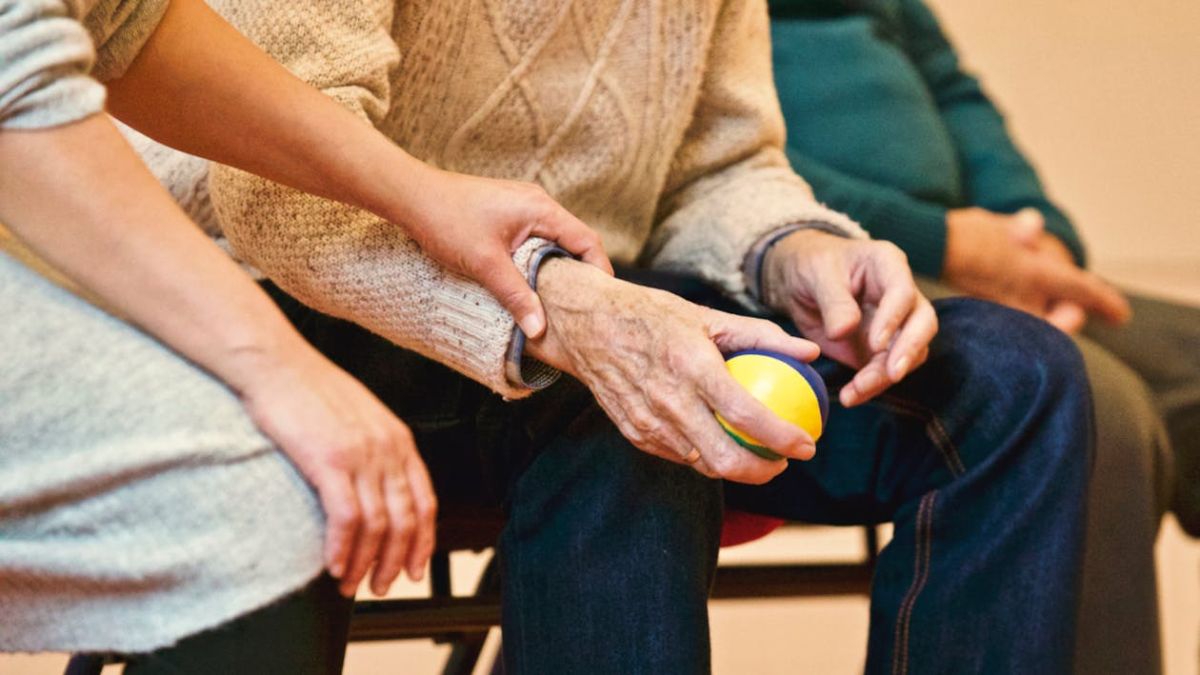Understanding Seasonal Affective Disorder: Shedding Light on the Winter Blues
Seasonal Affective Disorder (SAD), also known as the winter blues, is a mood disorder that typically occurs during the winter months when there is less natural sunlight. This condition can have a significant impact on an individual’s mental and emotional well being, affecting everything from mood and energy levels to sleep patterns and appetite. As the National Institute of Mental Health says, “Many people go through short periods when they feel sad or unlike their usual selves.”
Understanding SAD is crucial for healthcare professionals and caregivers, as it allows them to provide appropriate support and care for individuals experiencing this disorder. In this blog, we will shed light on the causes, symptoms, and treatment options for SAD, with a focus on how True Care Home Care can help individuals navigate through the challenges of this condition.
What is Seasonal Affective Disorder (SAD)?
Seasonal Affective Disorder, often referred to as SAD, is a type of depression that occurs during specific seasons, most commonly the winter months. It is believed to be triggered by the decrease in natural sunlight during this time, which can disrupt the body’s internal clock and lead to a variety of symptoms.
The exact cause of SAD is still not fully understood, but research suggests that reduced sunlight exposure affects the production of certain brain chemicals, such as serotonin and melatonin, which play a crucial role in regulating mood and sleep patterns.
Individuals with SAD often experience symptoms such as feelings of sadness, loss of interest in activities, fatigue, difficulty concentrating, changes in appetite, and disrupted sleep patterns. These symptoms can be debilitating and have a significant impact on daily functioning.
It’s important to note that while SAD is most commonly associated with the winter months, some individuals may experience similar symptoms during other seasons, such as spring or summer, which is known as reverse SAD.
Understanding symptoms and diagnostic criteria is crucial for healthcare professionals and caregivers to provide accurate support and care for individuals with SAD.
Symptoms and prevalence of SAD
The symptoms of Seasonal Affective Disorder (SAD) can vary from person to person, but there are some common signs to look out for. In addition to feelings of sadness and loss of interest in activities, individuals with SAD may also experience low energy levels, irritability, social withdrawal, increased appetite (particularly for carbohydrates), and weight gain.
The prevalence of SAD varies depending on geographic location. It is more common in areas farther from the equator, where there are larger differences in daylight hours between seasons. According to the American Psychiatric Association, it is estimated that SAD affects about 5% of the American population, with women being more likely to develop the condition than men.
To diagnose SAD, healthcare professionals use a set of specific criteria outlined in the Diagnostic and Statistical Manual of Mental Disorders (DSM-5). These criteria include the presence of depressive symptoms during specific seasons for at least two consecutive years, a remission of symptoms during other seasons, and the absence of any other medical or psychiatric condition that could cause similar symptoms.
Causes and risk factors of SAD
While the exact cause of Seasonal Affective Disorder (SAD) is still unknown, there are several theories that may explain why some individuals are more prone to developing this condition during the winter months. One commonly discussed theory is the role of reduced exposure to sunlight. During the winter, the days become shorter, and there is less sunlight available. This reduction in sunlight may disrupt the body’s internal clock and affect the production of serotonin, a neurotransmitter that plays a crucial role in regulating mood.
Additionally, research suggests that SAD may have a genetic component. Individuals with a family history of depression or other mood disorders may be more likely to develop SAD. Other risk factors include being female, living in areas with long winters and limited sunlight, and having a history of depression or bipolar disorder.
Understanding the potential causes and risk factors of SAD can help individuals and their healthcare providers in implementing both preventive and treatment strategies.
There are different treatment options available for individuals with SAD, including both conventional and alternative approaches. Understanding these treatment options is crucial for individuals and their healthcare providers to develop a comprehensive plan for managing and alleviating the symptoms of SAD.
Diagnosis and treatment options for SAD
In order to effectively manage Seasonal Affective Disorder (SAD), an accurate diagnosis is essential. If you suspect that someone you know is, or you yourself are, experiencing symptoms of SAD, it is important to consult with a healthcare professional who can conduct a thorough evaluation. They will typically assess symptoms, medical history, and family history to determine whether SAD is indeed the underlying cause.
Once diagnosed, there are various treatment options available for SAD. Light therapy, also known as phototherapy, is a common and effective treatment method. It involves daily exposure to a specialized light box that emits bright light, simulating natural sunlight. This can help regulate the body’s internal clock and improve mood.
Another treatment option is psychotherapy, which can provide individuals with coping strategies and support to navigate their symptoms. Cognitive-behavioral therapy (CBT) is often used to challenge negative thought patterns and develop healthier ways of thinking and behaving.
In some cases, medication may be prescribed to manage SAD symptoms. Antidepressants may be recommended to alleviate depression and regulate mood.
It is crucial to remember that what works for one person may not work for another, and finding the right treatment approach may require some trial and error. Building a strong support network, engaging in regular physical activity, maintaining a healthy diet, and practicing self-care are additional strategies that can complement treatment and help manage SAD symptoms.
Lifestyle changes and self-care strategies for managing SAD
Lifestyle changes and self-care strategies play a crucial role in managing Seasonal Affective Disorder (SAD). While professional treatment is essential, there are several steps individuals can take on their own to help alleviate symptoms and improve overall well-being.
One of the key self-care strategies for managing SAD is maintaining a regular exercise routine. Physical activity has been shown to boost mood, increase energy levels, and reduce symptoms of depression. Engaging in activities such as walking, jogging, or practicing yoga can be particularly beneficial.
Additionally, maintaining a balanced and nutritious diet can contribute to overall mental and physical health. Consuming foods rich in omega-3 fatty acids, such as fatty fish, flaxseeds, and walnuts, has been linked to reduced symptoms of depression. It is also important to limit the intake of processed foods, sugars, and caffeine, as they can negatively impact mood and energy levels.
Ensuring exposure to natural light is another important aspect of managing SAD. Spending time outdoors during daylight hours, even on cloudy days, can help regulate the body’s internal clock and improve mood. If outdoor exposure is limited, light therapy devices that mimic natural sunlight can be used indoors.
In addition to these lifestyle changes, practicing self-care activities can provide immense relief from SAD symptoms. Engaging in activities that bring joy, relaxation, and a sense of fulfillment, such as listening to music, reading, practicing mindfulness, or spending time with loved ones, can help alleviate stress and improve overall well being.
However, it is important to note that self-care strategies should not replace professional treatment. It is crucial to work in conjunction with healthcare professionals to develop a comprehensive management plan that integrates lifestyle changes along with other appropriate treatment options.
Supporting loved ones with SAD
Supporting loved ones with Seasonal Affective Disorder (SAD) requires understanding, empathy, and patience. As a friend, family member, or partner, you play a crucial role in helping your loved one navigate the challenges of SAD and maintaining their well-being.
First and foremost, it’s important to educate yourself about SAD and its symptoms. By understanding the condition, you can better empathize with what your loved one is going through and offer appropriate support. Be attentive to any changes in their behavior, mood, or energy levels, and encourage them to seek professional help if needed.
Offering emotional support is vital. Let your loved one know that you are there for them and that you understand the difficulties they may be facing. Encourage open communication, but also respect their boundaries if they are not ready to talk. Sometimes, just being there as a reassuring presence can provide immense comfort.
Practical support can also be beneficial. Help your loved one with tasks that may feel overwhelming during their low periods, such as household chores or errands. Offer to accompany them on walks or outdoor activities to ensure they get enough natural light exposure. Encourage them to maintain a healthy lifestyle by cooking nutritious meals together or participating in exercise routines.
Most importantly, be patient and understanding. SAD can be a challenging condition to live with, and your loved one may have good days and bad days. Avoid judgment or criticism and instead, offer unconditional support and encouragement. Remind them that SAD is a temporary condition and that brighter days will come.
By adopting a compassionate and supportive approach, you can make a significant difference in your loved one’s journey with SAD.
Shedding light on the importance of understanding and addressing Seasonal Affective Disorder
Supporting loved ones with Seasonal Affective Disorder (SAD) requires a compassionate and empathetic approach. Educating yourself about the condition and its symptoms is crucial in order to offer appropriate support.
Providing emotional and practical support can make a significant difference in their well-being. However, it is important to remember to be patient and understanding, as SAD can be a challenging condition to live with. By being a pillar of support, you can help your loved one navigate the difficulties of SAD and remind them that brighter days are ahead.
If you know someone experiencing symptoms of SAD, we recommend visiting an urgent care clinic or your Primary Care Physician as soon as possible. Swift Urgent Care has virtual appointments readily available and Providers are standing by. If you’d prefer an in-person visit, walk-in or make an appointment for a time that suits you best. Alternatively, visit your regular Primary Care Physician who can help.





